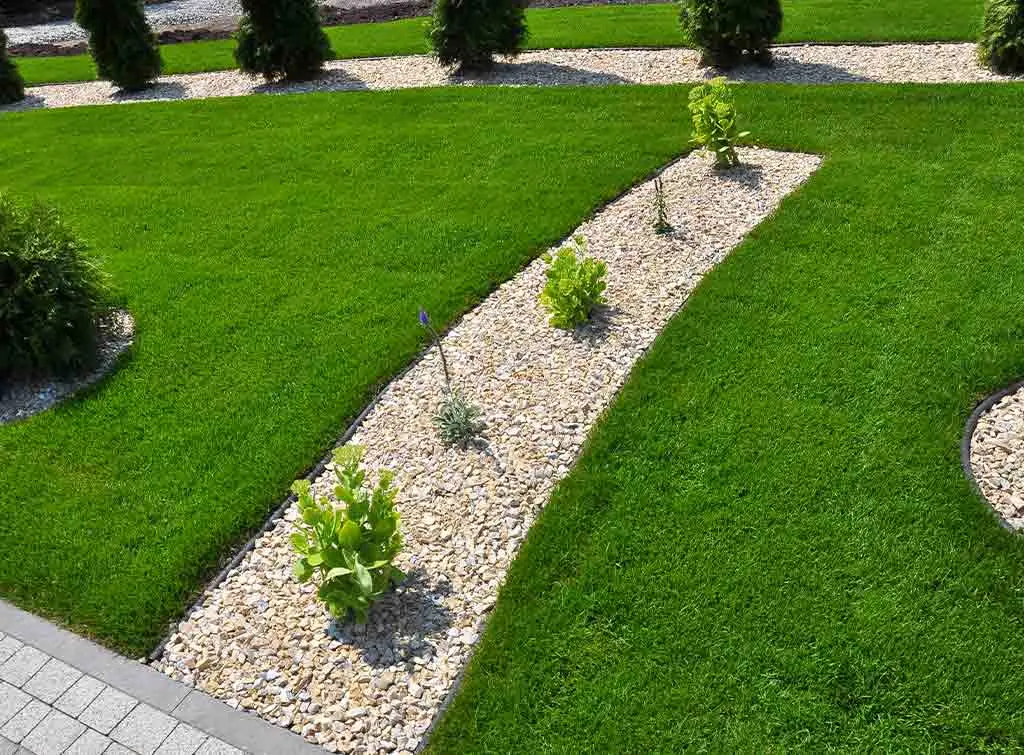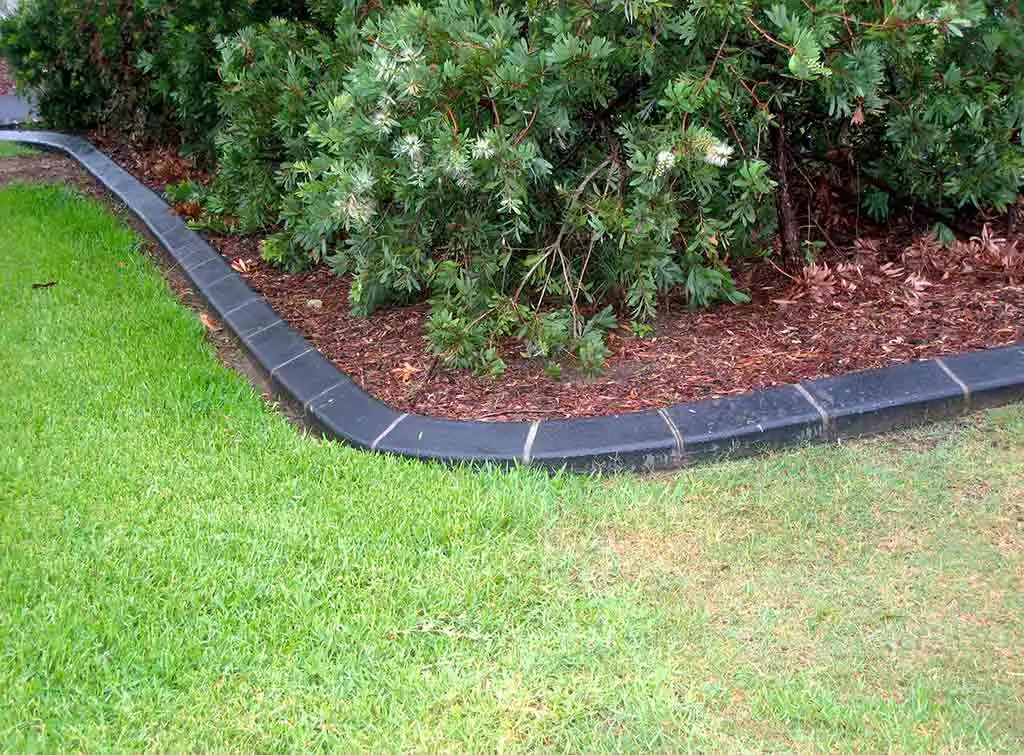Blog>How-To Guides>Your step-by-step on how to edge a lawn
Last updated: 3 June 2024
Your step-by-step on how to edge a lawn
Discover how to edge a lawn with our step-by-step guide and give your garden a professional finish

Learning how to edge your lawn is a great way to add shape and create neat borders in your garden. Crisp, tidy edges add eye-catching definition to your grass.
No matter if you're cutting lawn edges for the first time or giving them a quick tidy up, it's definitely worth spending the time and effort to get it right.
However, if you'd prefer a professional to do the job, we've got you.
Enter your postcode in the box below and see who comes approved by us and recommended by people near you. Let's do this!
See the tradespeople we've checked and recommend for your job
Tools you'll need
Half-moon edger
Edging shears
Grass shears
Plank of wood or long rope
How to edge a lawn
It's best to trim overgrown grass every time after you mow. Then, once a year, recut the edges to smarten up the lawn.
For a step-by-step guide on how to cut grass properly, head to our how to mow a lawn blog. Or, hire a professional gardener to cut your grass!
Here's how to edge a lawn in 4 easy steps.
1. Decide on the shape of your lawn
Before you get the tools out, it's a good idea to look at the shape of your lawn. Start by looking at areas where there is no edge.
Do you want straight edges for a formal looking lawn? Or perhaps sweeping curved edges for a softer, aesthetic.
You might decide to change the shape of your lawn completely with new edges and expand flower borders deeper into the grass.
If you've got green fingers, you may feel confident edging and shaping the lawn yourself.
However, if you don't have the time or expertise, we definitely recommend contacting a local grass cutting service who can help.
See the tradespeople we've checked and recommend for your job
2. Mark out the edges
If you're planning to reshape your lawn with new lines or curves, you'll need to mark it out.
We wouldn't recommend doing this by eye as you might end up with a messy look that will take extra time and effort to put right.
For straight lines you can cut against a plank of wood or use string tied between two canes. For curved edges a good tip is to lay down a rope or hose and keep it in place with tent pegs.
Otherwise simply follow the existing curve of the lawn.
Top tip: For a perfect circle, tie string to a stake and place in the centre of the lawn. Then walk around it, holding the string taut, and use marking paint on the ground.
3. Start cutting the edges
Using a half-moon edging tool, cut carefully along the outside edge of your marks or existing border
Work at a 90 degree angle to the grass to create a straight downward edge
Professional gardeners recommend placing the edging tool about two inches in from the edge and dig into the lawn about two inches deep
As you lift the edging tool, the excess lawn and soil will lift out
Drop into a bucket, ready for your compost bin
Continue right around the lawn for a smooth, clean edge
Top tip: It might mean a little more elbow grease, but a manual edger will give neater, more precise results than an automated edging tool.
4. Trim the edges regularly
Once you have a created a neat, vertical lawn edge, it's so important to trim it regularly.
During warm growing periods you'll probably need to do this after each time you mow. So that's weekly - sometimes, twice a week!
To trim edges use long-handled edging shears with an angled blade to cut the grass the mower couldn't reach. Snip the the edges all the way around the lawn to create a smooth even line.
Remove the cuttings and put in the compost bin.

Extra edging tips for a smart finish
For overgrown paths, use a sharp knife to cut the turf and pull pieces away
If your lawn is flush with the path, use long-handled grass shears with a flat, horizontal blade so you can snip the grass to the same level as the lawn
Long-handled edging shears are a good choice for small lawns - look out for strong carbon steel blades and keep them sharpened
To speed up edging on larger lawns, try an electric edging tool
Lawn edging ideas to keep grass out
Unwanted grass can be as powerful as weeds. But, appropriately done, lawn edging can stop unwanted grass from creeping into your flowerbeds.
Some of the most effective lawn edging ideas to keep grass out include:
Plants, flowers and even bushes create a natural, charming look
Position bricks close together to stop turf from getting through the cracks, and set your bricks in a layer of sand for an even finish
Metal edging is a tidy and modern alternative that is also weather resistant
Rubber edging is cheaper than brick but more flexible and malleable – you can shape or style it to suit whatever look you fancy
How to find a local gardener or grass cutting service
If you'd prefer to find a local grass cutting service or gardener to do the job, here's a quick checklist before you hire:
Do your homework and know what you need a gardener for before hiring
Check their references and reviews from previous customers
Ask questions to understand what each local gardener can offer
Get quotes from multiple gardeners and ask for both cost and time estimates
FAQs
When is the best time to edge a lawn?
Spring is the best time to edge your lawn as grass is growing well and soil is soft to cut into. Any new sections or repaired lawn edges will also have time to regrow throughout the summer.
Should you edge your lawn every time you mow?
Trim edges regularly is the main advice – maybe after each time you mow your lawn during the growing season. Every time you mow your lawn, assess the lawn’s edges. In the early part of the growing season, warmer temperatures and more rain can lead to a growth spurt so you might need to mow and edge more frequently.
How much does grass cutting cost?
On average, the price for grass cutting is £30 per hour or £30 per 100m².
The average cost of a gardener in the UK is around £175 per day for standard gardening. The cost for a landscape gardener though is higher, usually starting at £230 per day.
See the tradespeople we've checked and recommend for your job
See the tradespeople we've checked and recommend for your job


